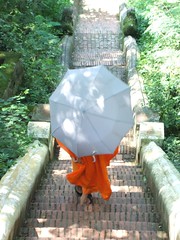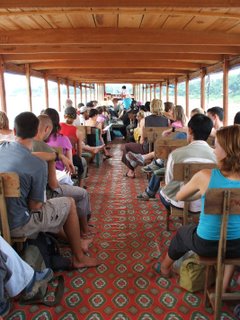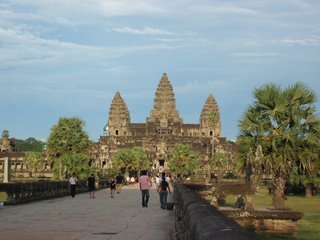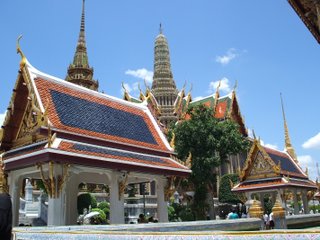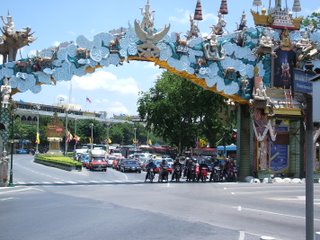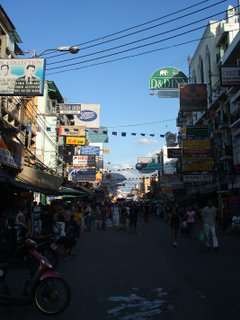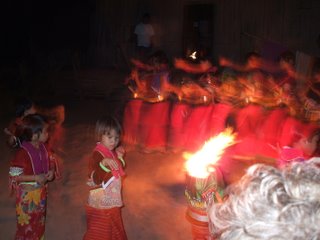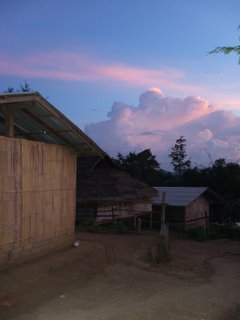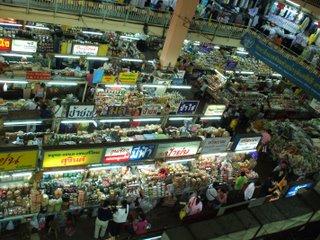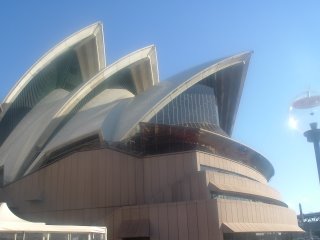We got off the slow boat and spent an equally slow few days in Luang Prebang, Laos (I realized I don't know exactly how many days it was. At this point, it's all blurring together a bit).
The town, at least the old (and tourist) center, has an easy-going feel. It has a heavy French influence from the colonial days, which gave it, at times, the familiar air of New Orleans' French Quarter. We used Luang Prabang as the base we haven't had for some time, giving us a chance to sleep in, wander aimlessly and revel in trying all the different cheap but good Laotian food. One afternoon a ride to the local waterfalls, a wander through the old palace-turned-museum. Another day walking to the hill-top temple and sampling the night market. Mostly just relaxing and enjoying having some travel companions - two Americans who also spent the past year in New Zealand.
Today, we came south by bus, traveling on narrow, winding roads along and over jungled mountains, with sheer rock cliffs jutting out of the greenery in the distance. Passed through many villages, just lines of wooden thatched huts lining the road. The road didn't even out until the final hour or so of the six-hour journey.
Vang Vieng, our stop for the night, can't be more different from Luang Prabang. It's a town that's grown up around a bus stop, with wide, dusty streets. Every other building seems to be under construction or renovation, as are the sidewalks (which often give way to an open drainage ditch). This town has no old influences, just the influence of the tourists. It's little more than a couple intersections of guesthouses and restaurants, most of which are screening old episodes of Friends for some reason.
 The archived ramblings of my time as a world traveler up to my current life in Washington, D.C.
The archived ramblings of my time as a world traveler up to my current life in Washington, D.C.